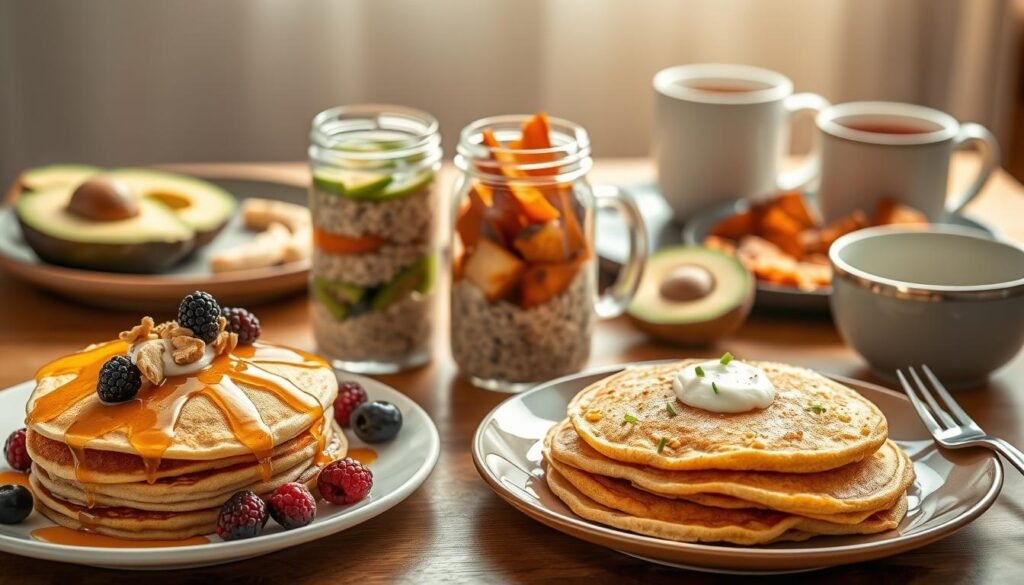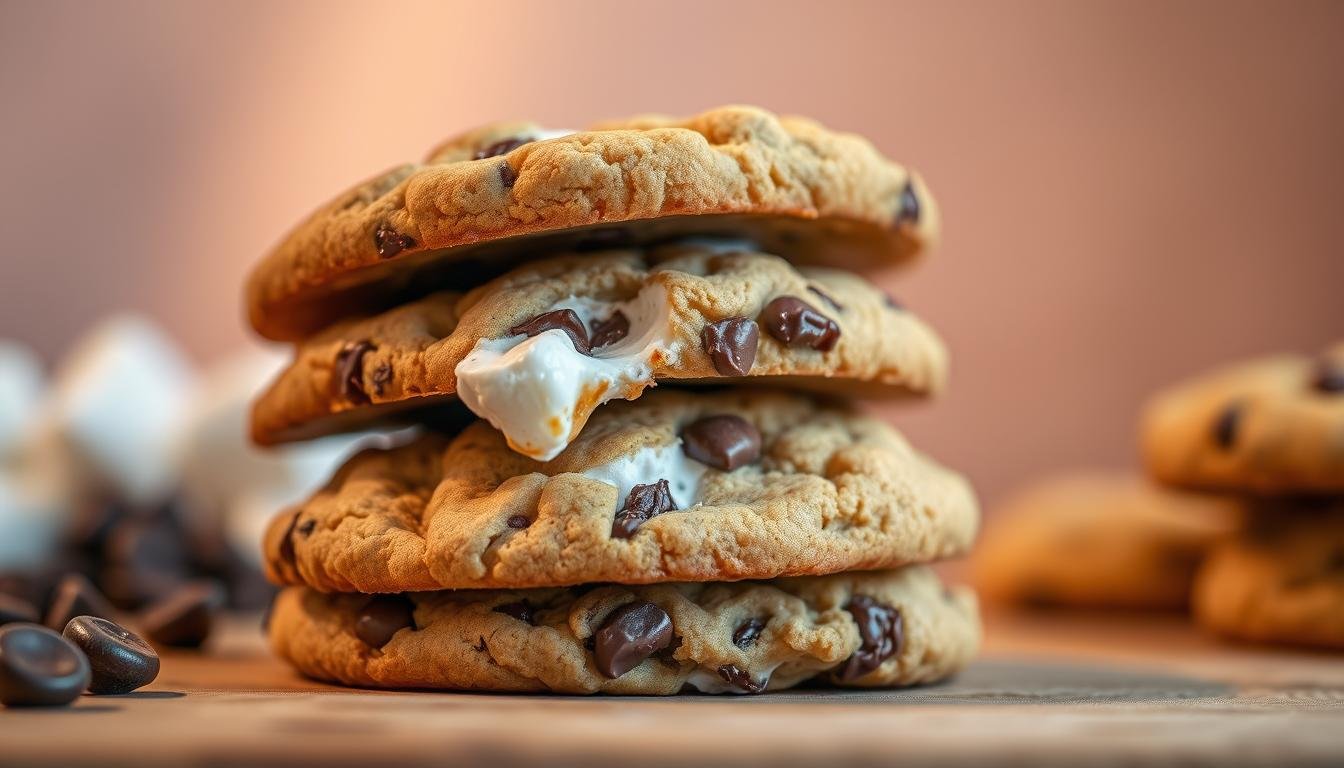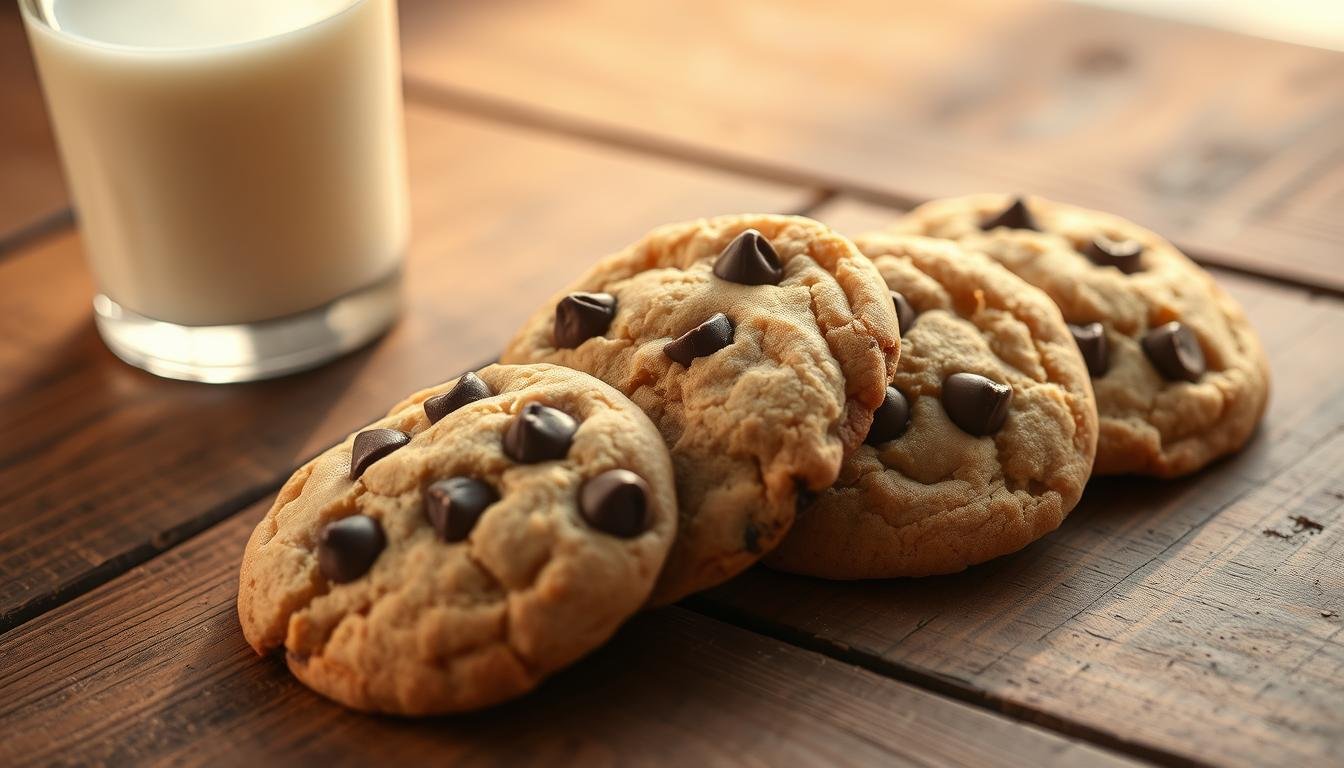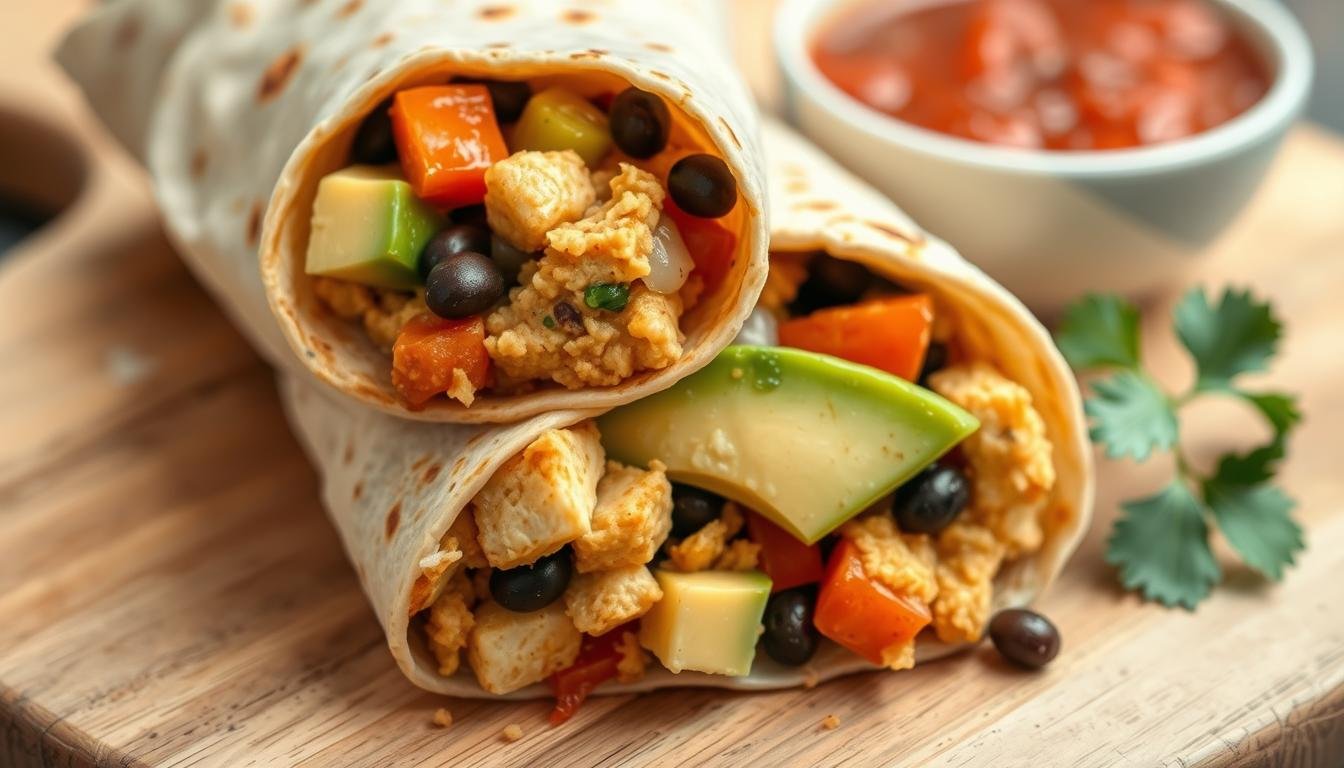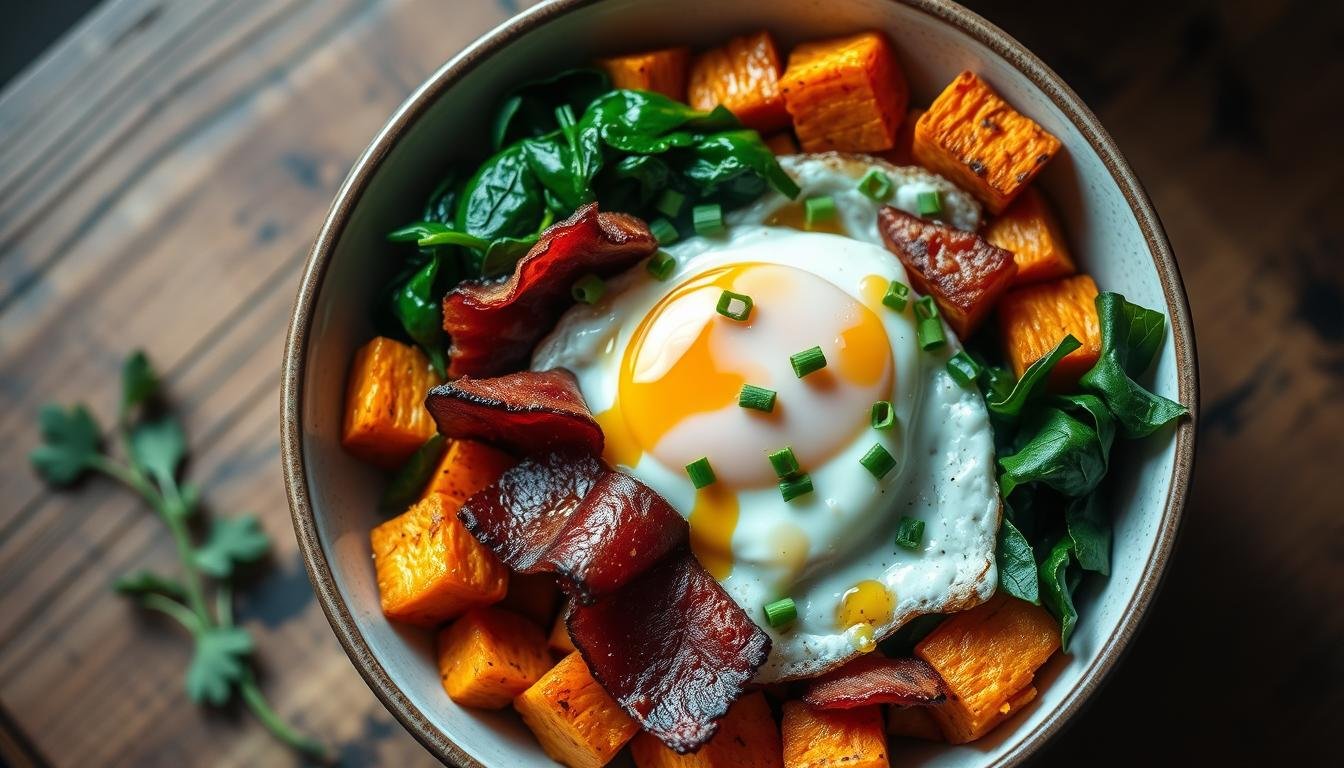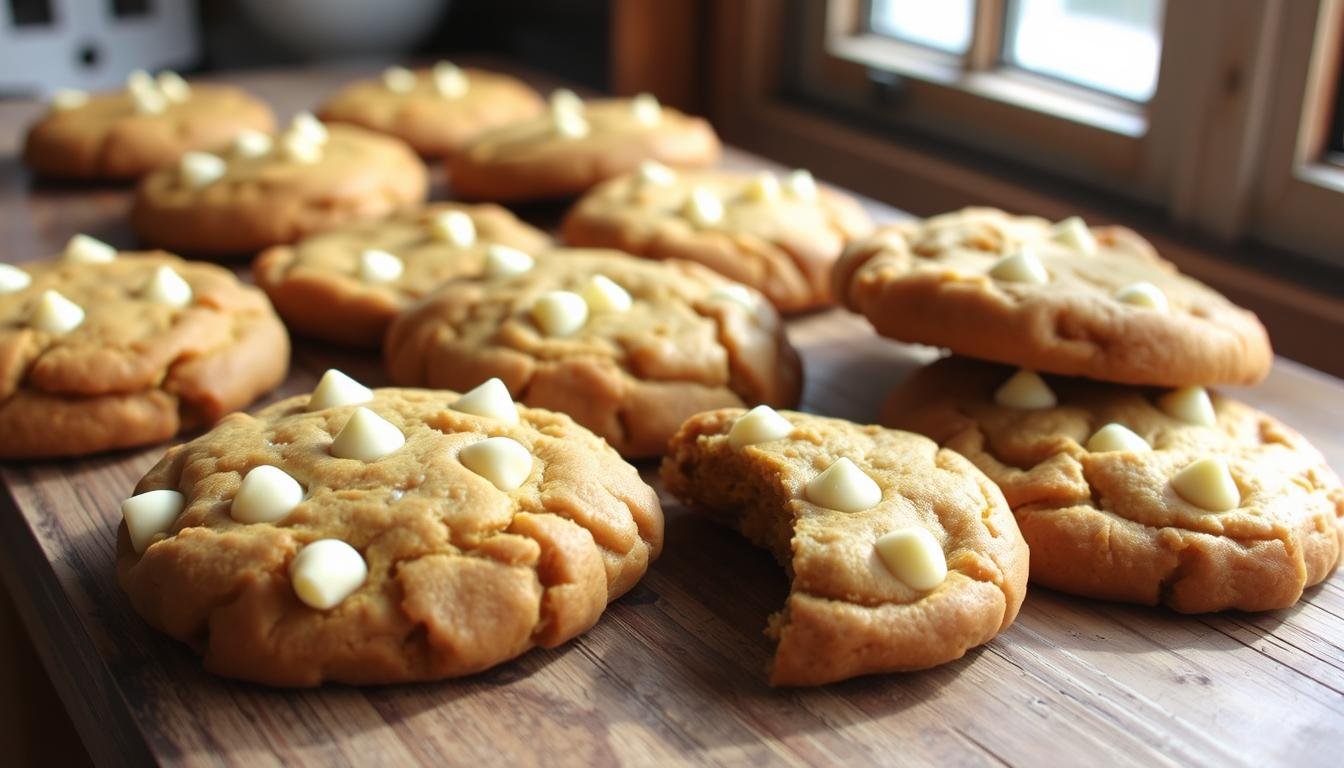Do you hate starting your day with bloating and cramps? What if breakfast could make you feel better instead? For people with irritable bowel syndrome (IBS), mornings can be scary. One wrong ingredient can make you feel sick for hours.
Monash University found that 75% of IBS patients feel better with the right diet. Even kids can get sick from food, so we need meals that are easy on the stomach for everyone.
I’ve worked hard to make breakfasts that taste great and are easy on your stomach. It’s not about eating boring food. It’s about enjoying your first meal of the day. Try our fluffy pancakes or savory egg wraps. They follow FODMAP rules and taste amazing.
Key Notes;
- Targeted breakfast choices can reduce IBS symptoms for 3 out of 4 people
- 10-15% of children experience digestive issues influenced by diet
- Monash University’s research validates low-FODMAP effectiveness
- Morning meals require careful ingredient selection for symptom control
- Flavorful options exist beyond typical restrictive diets
Understanding Low-FODMAP Breakfast Recipes Basics
Starting your day with IBS can be tough. But knowing about FODMAPs makes it easier. Let’s learn why these carbs are important and how to avoid bad foods in the morning.
What Are FODMAPs and Why They Matter
FODMAPs are short carbs that don’t digest well. They pull water into your gut and cause gas and pain. This is bad news for people with IBS.
Studies show 75% of IBS patients feel better on a low-FODMAP diet. They have to have pain and changes in bowel movements for three months. If you have these symptoms, FODMAPs might be the problem.
But here’s something important: how much you eat matters. Even foods that are okay for you can cause problems if you eat too much of them. This is why some meals can make you feel bad, even if you’re eating safe foods.
Common Breakfast Foods to Avoid
Some foods you love in the morning might not be good for you. Be careful with:
- Wheat-based items: Bagels, cereals, and toast (oligosaccharides)
- Lactose-heavy dairy: Milk, yogurt, and soft cheeses (disaccharides)
- High-fructose fruits: Apples, pears, and mangoes (monosaccharides)
- Sweeteners: Honey, agave, and sugar alcohols like xylitol (polyols)
Choose IBS-friendly meals instead. Try lactose-free milk, gluten-free oats, or fruits like strawberries. Most people can add back some FODMAPs later after finding out what bothers them.
Quick & Easy Morning Solutions
These IBS-friendly breakfasts are perfect for busy mornings. They’re fast, tasty, and follow Monash University’s low-FODMAP guidelines. Let’s explore two breakfasts that will be your new favorites.
Lactose-Free Yogurt Bowls
Green Valley Creamery’s lactose-free yogurt is great for making your own breakfast. You can add Monash-certified fruits like strawberries or blueberries. Here’s a simple mix:
- 1 cup lactose-free plain yogurt
- ½ unripe banana (green-tipped)
- 10-12 fresh strawberries
- 1 tbsp chia seeds for extra fiber
Pro tip: Unripe bananas are better for IBS because they have less fructans. Use Health’s pre-portioned fruit packs for quick mornings.
| Fruit | Safe Portion | FODMAP Type |
|---|---|---|
| Strawberries | 65g (5 medium) | Excess fructose |
| Blueberries | 40g (20-30 berries) | Sorbitol |
| Banana (unripe) | 100g (1 medium) | Fructans |
Chia Seed Pudding 3 Ways
This recipe is easy to make ahead. It’s based on Thinky Bites’ strawberry smoothie but is better for your gut. Here’s how to make it:
- Mix ¼ cup chia seeds with 1 cup lactose-free milk
- Refrigerate overnight
- Top with low-FODMAP additions
Three flavor variations:
- Berry Bliss: 45g raspberries + 10g dark chocolate shavings
- Tropical Twist: 30g kiwi + 15g shredded coconut
- Spiced Pumpkin: 2 tbsp canned pumpkin + ½ tsp cinnamon
“Chia’s soluble fiber forms a protective gel in the gut, slowing digestion and reducing IBS symptoms.”
3. Savory Low-FODMAP Breakfasts
Want something hearty in the morning? These savory low-FODMAP recipes are full of flavor but won’t make you feel bloated. I’ve made dishes that are rich in protein and use safe ingredients instead of garlic and onions. Let’s explore two healthy low-FODMAP breakfast options that are tasty and easy on your stomach.
Spinach-Feta Egg Muffins
Inspired by the IBS Kids Programme, these muffins are a big hit. Here’s what you need:
- 8 large eggs
- 1 cup fresh spinach (chopped)
- ⅓ cup crumbled feta
- 1 tbsp fresh chives
- ¼ tsp smoked paprika
3-step prep:
- Preheat oven to 350°F and grease muffin tin
- Whisk eggs with paprika, then fold in other ingredients
- Bake 18-20 minutes until set
These muffins stay fresh for 3 days in the fridge or 1 month in the freezer. They’re great for quick breakfasts. The spinach cooks fast, thanks to a tip from ModifyHealth.
Quinoa Power Bowls
This bowl is customizable and safe, thanks to Monash-certified ingredients. My favorite mix:
| Base | Veggies | Protein |
|---|---|---|
| Cooked quinoa | Roasted zucchini | Grilled chicken |
| Baby spinach | Steamed carrots | Firm tofu |
Assembly hack: Prepare each part separately for easy mixing. Mix with olive oil and safe herbs like basil. Add 2 tbsp garlic-free pumpkin seeds for crunch and magnesium to help digestion.
Keep quinoa and veggies in airtight containers for up to 4 days. Reheat each part separately to keep it fresh. These bowls show that healthy low-FODMAP breakfast options can be both good for you and fun to eat!
4. Gut-Friendly Baked Goods
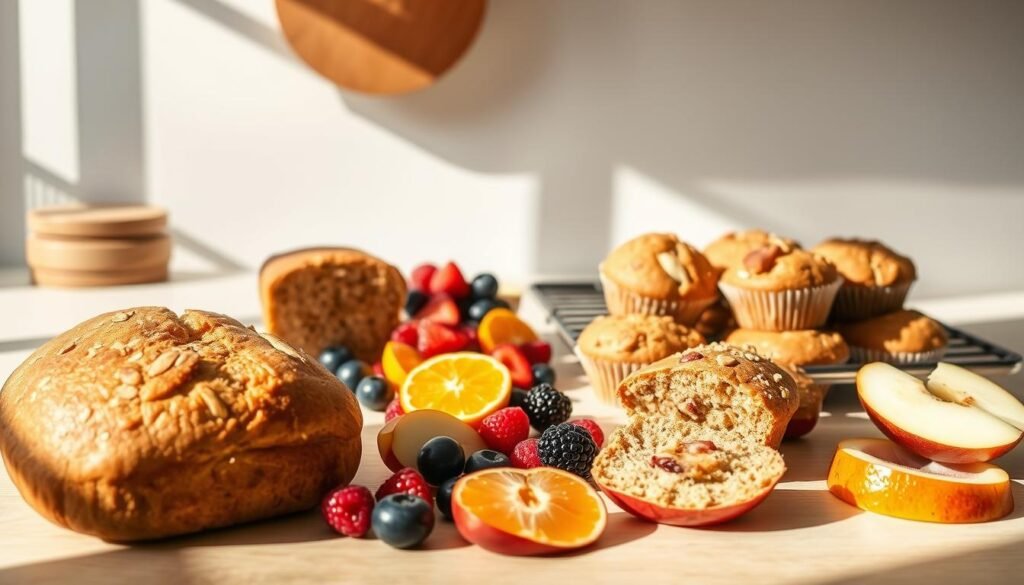
You can enjoy baked goods on a low-FODMAP diet. Use smart swaps and gluten-free flours for breakfast treats. I’ve made recipes with Bob’s Red Mill 1:1 Gluten-Free Flour that are gentle on your stomach. They use safe sweeteners like pure maple syrup and stevia.
Almond Flour Pancakes
My favorite almond flour pancake recipe is a low-FODMAP twist on classic pancakes. Almond flour adds a nutty flavor and keeps carbs in check. Here’s why they’re great:
- Swap dairy milk for lactose-free almond or oat milk
- Use FODMAP Everyday’s pancake formula as a base
- Sweeten with 2 tbsp maple syrup per batch
These pancakes freeze well. I stack them with parchment paper for quick reheating.
Gluten-Free Oatmeal Cookies
Try these chewy oatmeal cookies for a quick breakfast. They’re made with gluten-free oats and no raisins. Sweetness comes from stevia and dark chocolate chips.
| Recipe | Key Ingredients | Prep Time | Storage Life |
|---|---|---|---|
| Almond Flour Pancakes | Almond flour, eggs, maple syrup | 15 mins | 3 months frozen |
| Oatmeal Cookies | Gluten-free oats, stevia, coconut oil | 25 mins | 2 weeks airtight |
Both recipes use shelf-stable ingredients. Prep them during weekend meal prep. Store cookies in glass containers and pancake mixes in labeled jars.
5. Make-Ahead Meal Prep Strategies
Preparing breakfast ahead of time saves mornings and reduces IBS triggers. I’ve found that dedicating 90 minutes weekly to batch cooking creates stress-free, gut-friendly meals. Let’s explore two strategies that balance convenience with FODMAP safety.
Freezer-Friendly Smoothie Packs
Portion-controlled smoothie packs prevent ingredient overload. Here’s my system:
- Use FODY-certified fruits like strawberries or kiwi (½ cup max)
- Add spinach or kale (1 cup)
- Include lactose-free protein powder (1 scoop)
- Freeze in reusable silicone bags
“Flash-freezing ingredients separately preserves texture and prevents ice chunks.”
Batch-Cooked Breakfast Burritos
Mission gluten-free tortillas hold up well when frozen. My assembly line:
- Scramble eggs with bell peppers (green only)
- Mix cooked turkey bacon with low-FODMAP salsa
- Layer ingredients using ¼ cup fillings per tortilla
- Wrap in parchment paper before foil
| Meal Prep Item | Prep Time | Storage Life | FODMAP Check |
|---|---|---|---|
| Smoothie Packs | 15 mins | 3 months | Single-serving fruits |
| Breakfast Burritos | 45 mins | 6 weeks | Stack-safe portions |
| Egg Muffins | 30 mins | 1 week | No onion/garlic |
Always label containers with dates and ingredients. I use ModifyHealth’s “3-2-1” method: 3 breakfast options, 2 snack types, 1 backup meal. This prevents boredom while keeping FODMAPs in check.
6. Low-FODMAP Smoothie Essentials
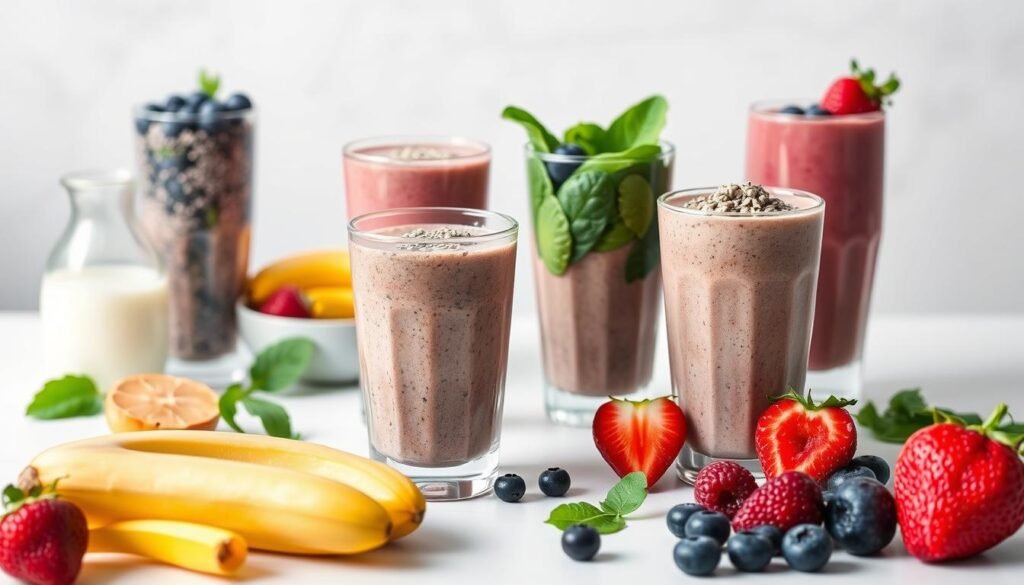
Smoothies are great for quick, healthy mornings. You can make them at home without high-FODMAP ingredients. This way, you control what goes in and get lots of nutrients.
I like to make protein-rich formulas. They keep me full and don’t upset my stomach. This is perfect for when I’m in a hurry or after working out.
Peanut Butter & Spinach Blend
This smoothie has SunButter and spinach. Vanessa Vargas says it’s good for balanced nutrition:
- 1 cup unsweetened almond milk
- 2 tbsp SunButter
- 1 scoop pea protein powder
- Handful of fresh spinach
- 1/2 frozen banana (green-tipped for low fructose)
Blend it well. Then, you can add chia seeds for IBS-C or less spinach for IBS-D. The pea protein has 20g of plant-based protein, great for active people.
Blueberry-Kale Protein Shake
Use lactose-free protein powder instead of yogurt. This recipe is full of antioxidants. It includes Monash-certified acai powder for flavor without too much sorbitol. Here’s what I mix:
- 3/4 cup frozen blueberries
- 1 cup lacrosse-free vanilla protein shake
- 1/2 cup chopped kale (stems removed)
- 1 tbsp ground flaxseed
For a thicker shake, freeze the protein shake into ice cubes first. This shake has 15g of fiber from safe sources. It helps keep your gut happy without bloating.
Pro Tip: Make a kiwi smoothie bowl by using less liquid and adding 1/4 cup peeled kiwi slices. The vitamin C helps your body absorb iron from greens better.
7. Soluble Fiber Breakfast Boosters
When I need to help my digestion, I turn to soluble fiber in the morning. It’s different from insoluble fiber, which can upset some stomachs. Soluble fiber, like psyllium and flaxseed, helps with constipation without making me feel bloated. These recipes are gentle on my stomach and taste great.
Psyllium Husk Oatmeal
Heather’s Tummy Care psyllium husk makes oatmeal better for my gut. I use gluten-free oats and add 1 tsp of psyllium after cooking. This keeps the fiber good. Let it sit for 2 minutes to thicken, not overcook. Add 12 raspberries and a bit of maple syrup for flavor.
“Always take psyllium with 8 oz of water – it needs liquid to work effectively.”
Flaxseed Breakfast Cookies
These cookies are easy to eat on the go. They’re made with Pamela’s Baking Mix, which is gluten-free and full of fiber. Here’s what I mix together:
- 1/2 cup ground flaxseed
- 1 mashed ripe banana
- 2 tbsp maple syrup
- 1/4 cup lactose-free butter
Bake at 350°F for 12 minutes until they’re golden. Each cookie has 3g of fiber and omega-3s from flax.
| Ingredient | Soluble Fiber | Low-FODMAP Serving |
|---|---|---|
| Psyllium Husk | 5g per tsp | 1-2 tsp |
| Ground Flaxseed | 3g per tbsp | 2 tbsp |
| Gluten-Free Oats | 2g per 1/2 cup | 1/2 cup dry |
Remember to drink 8-10 oz of water with these meals. I keep a glass of water by my side. This helps me get the most benefits without feeling uncomfortable.
8. Anti-Inflammatory Ingredient Swaps
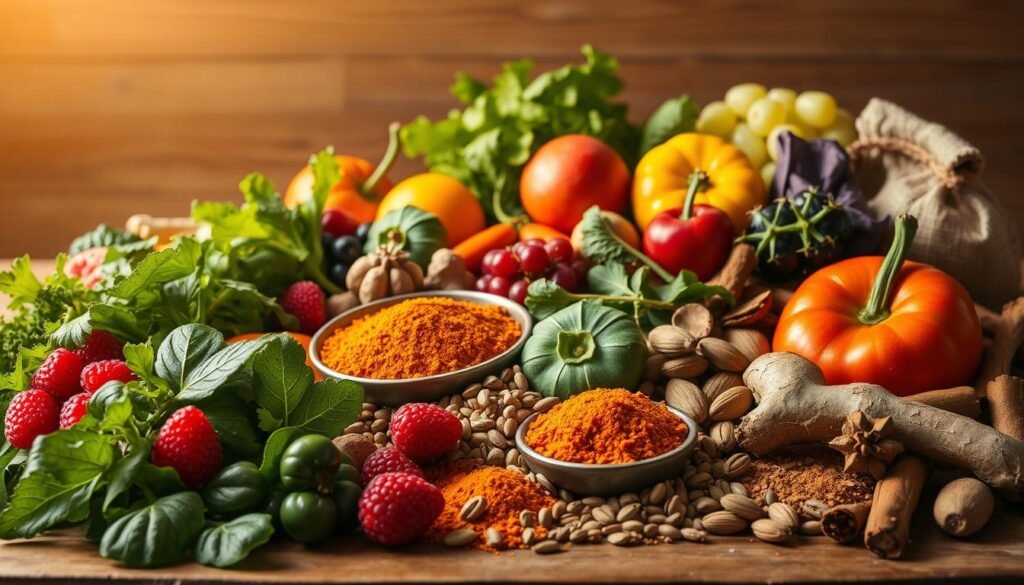
Changing your breakfast with anti-inflammatory foods can make mornings better. Simple swaps can help with IBS and make food taste great. Let’s look at two recipes that fight inflammation.
| Common Ingredient | Anti-Inflammatory Swap | Key Benefit |
|---|---|---|
| Regular cow’s milk | Almond milk + pinch of turmeric | Reduces lactose irritation |
| Processed sweeteners | Pure maple syrup | Lower fructose content |
| White flour pancakes | Almond flour pancakes | Rich in vitamin E |
Ginger-Turmeric Latte
I started drinking this golden drink after finding turmeric at the market. Grate 1 teaspoon of organic turmeric and ½ inch of ginger into hot almond milk. Add black pepper to make curcumin work better.
For the best taste:
- Choose Ceylon cinnamon over cassia
- Simmer for 5 minutes before straining
- Keep ginger in the freezer for freshness
Walnut & Quinoa Porridge
Try quinoa instead of oatmeal for a protein-rich breakfast. Toast walnuts to boost their omega-3 content. Mix with quinoa and lactose-free milk. Add cardamom for its anti-inflammatory benefits.
Here’s how to make it yours:
- Top with fruits like kiwi or orange
- Add 1 tsp psyllium husk for fiber
- Drizzle with macadamia nut butter
9. Nutritional Balance for IBS Management
Balancing proteins and fats is key for managing IBS. It helps your gut feel better. I’ve learned that mixing nutrients right can reduce bloating and keep energy up.
Protein Pairing Strategies
Combine animal and plant proteins for recipes that are easy on your stomach. Here are some ideas:
- Eggs with spinach (rich in iron)
- Grilled chicken paired with quinoa
- Lactose-free yogurt topped with chia seeds
The IBS Kids Programme suggests foods rich in calcium. For kids, almond butter on gluten-free toast is a good choice. Pediatric RDs recommend 15-20g of protein for breakfast using these combinations:
| Protein Source | FODMAP Status | Serving Size |
|---|---|---|
| Firm tofu | Safe | ½ cup |
| Turkey breast | Low | 3 oz |
| Pea protein powder | Certified | 1 scoop |
Healthy Fat Sources
Fats slow digestion, which helps prevent blood sugar crashes. My favorite IBS-friendly breakfasts include:
“Avocado oil and walnuts provide anti-inflammatory benefits without overwhelming sensitive systems.”
– FODY Nutrition Guidelines
Here are some ideas for yogurt parfaits:
| Fat Source | Best Uses | Portion Tip |
|---|---|---|
| Chia seeds | Smoothies, puddings | 1 tbsp daily |
| Macadamia nuts | Granola, toppings | 10-12 pieces |
| Olive oil | Egg scrambles, dressings | 1 tsp per serving |
For kids, blend avocado into chocolate smoothies. They won’t even notice! Always mix fats with fiber for better nutrient absorption.
Building Your Low-FODMAP Routine
Starting small is key to making lasting changes. Use the 7-day meal plan template to try new recipes. Try spinach-feta egg muffins, almond flour pancakes, and a low-fodmap breakfast casserole.
Make freezer-friendly smoothie packs or quinoa bowls on Sundays. This makes mornings easier.
Use the Monash University FODMAP app to track how you feel. It helps you find out what foods upset you. A dietitian can help you adjust the amounts and ingredients you use.
Get the IBS Kids Programme’s PDF checklist for easy grocery lists and portion charts. Keep things like lactose-free yogurt, chia seeds, and psyllium husk on hand. Remember, it’s the effort that counts, not being perfect.
Share your favorite recipes in the comments or on social media with @GutHealthExperts. Every meal you make is a step towards better mornings and digestive health.

